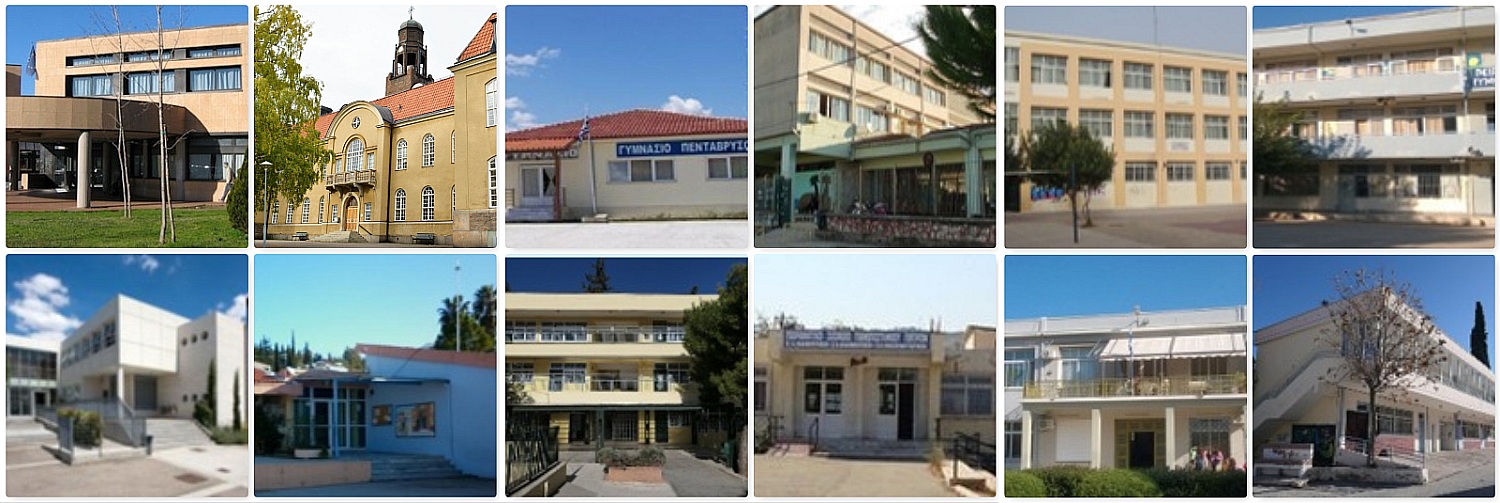
The activities of the project consortium to develop a network of schools in Europe has resulted in a total of 25 schools with IoT infrastructure and 2 schools in Greece without infrastructure comprising the GAIA fleet of school buildings. The list of participating schools in GAIA has been shaped as follows:
- Experimental Primary School of the University of Patras
- Experimental Junior High School of the University of Patras
- Experimental High School of the University of Patras
- Experimental Junior High School of Laggouras, Patras
- 8th Junior High School of Patras
- 46th Primary School of Patras
- 1st Laboratory Center – Professional High School of Patras
- 1st Primary School of Psychiko, Athens
- 1st Junior High School of Nea Filadelfia, Athens
- 5th Primary School of Nea Smyrni
- 8th Junior High School of Volos
- 8th Junior High School of Korydallos, Athens
- Primary School of Lygia, Lefkada
- 7th High School of Trikala
- 6th Primary School of Kaisariani, Athens
- 1st Junior High School of Rafina, Athens
- Talos Robotics Team, Volos
- Junior High School of Pentavryso, Kastoria
- Primary School of Megisti, Kastelorizo
- 2nd Primary School of Paralia, Patras
- Junior High School of Ekpaideftiria Panou
- Ellinogermaniki Agogi (EA)
- Technical High School of Soderhamn (SK)
- Gramsci Keynes (Prato)
- Sapienza University of Rome
- 2nd Junior High School of Nea Ionia, Athens (without IoT infrastructure)
- 3rd High School of Nea Filadelfia, Athens (without IoT infrastructure)
Greece
A set of 21 pilot public school buildings are utilized in the context of the project; 8 of them are primary schools, another 7 are secondary schools and 6 are high schools. The schools are spread across 7 locations, covering a range of local climatic conditions. Moreover, several pilot buildings are situated in suburban and rural areas, 2 in small islands, while others are situated inside/close to city centers. Currently, electricity consumption meters are installed in all of these pilot buildings, along with sensors monitoring indoor and outdoor conditions as described above. The vast majority of the rooms monitored are used for teaching purposes and the rest for other activities like teacher/staff rooms, gym, etc. The year of construction of these buildings ranges from 1950 to 2000.
Also, the buildings of consortium partner Ellinogermaniki Agogi (EA) will be part of the pilots in Greece. EA is a large private school which covers every degree of education from nursery to high school. Apart from the required teaching classes, the buildings of the primary school and the junior and the senior high school, include 6 common rooms, 3 computer laboratories, 3 music rooms, 3 art rooms, 3 laboratories for chemistry, sciences and technology, 2 amphitheaters, 2 video rooms, 2 libraries, halls, observatory, an indoor gym, swimming pool, basketball/volleyball/tennis courts, football fields. The total number of students of all levels attending EA is currently close to 2200, thus making the total number of Greek students that will be directly or indirectly affected by the project close to 5000.
More info about the Greek GAIA schools
Italy
One pilot study will be settled in the building of the Gramsci Keynes High School in Prato. The school was founded in 2000 and offers three curricula: economic, technological and scientific programs. The total number of students is close to 1400. The school has 136 teachers and 28 employees in the technical and administration staff. The school complex was completed at the end of ’80s and consists of two buildings, covering 12.000 square meters with multiple teaching rooms, 3 computer laboratories with 25 PCs each, 1 CAD laboratory, 2 laboratories for language learning equipped with 30 PCs and a smart board, a conference room, 1 library, 1 indoor gym. The school is open all day long from Monday to Saturday. An energy meter is installed providing energy consumption measurements on a monthly basis for the two buildings as a whole.
Additionally, three public buildings at the Sapienza Universita di Roma main campus will be used. More than 100.000 students attend lectures and have social activities within the main campus. A high speed WiFi connection is available and will be used to engage the students in the social gaming platform. The selected buildings include administrative offices with at least two floors and more than 40 employees. The buildings include a front-office building with more than 100 visitors/day, a back-office building with a limited number of visitors but a larger number of employees and a building with small and medium sized rooms for meetings and seminars.
More info about the Italian GAIA schools
Sweden
Soderhamn municipality’s (consortium partner) technical high school building complex (Staffangymnasiet) will be used within GAIA. The high school consists of five buildings, covering 16.000 square meters and 220 rooms. The main building was constructed during the 19th century. It has been extended and renovated numerous times over. The number of people using the buildings daily is close to 1000, with a staff of 110.
More info about GAIA in Sweden


